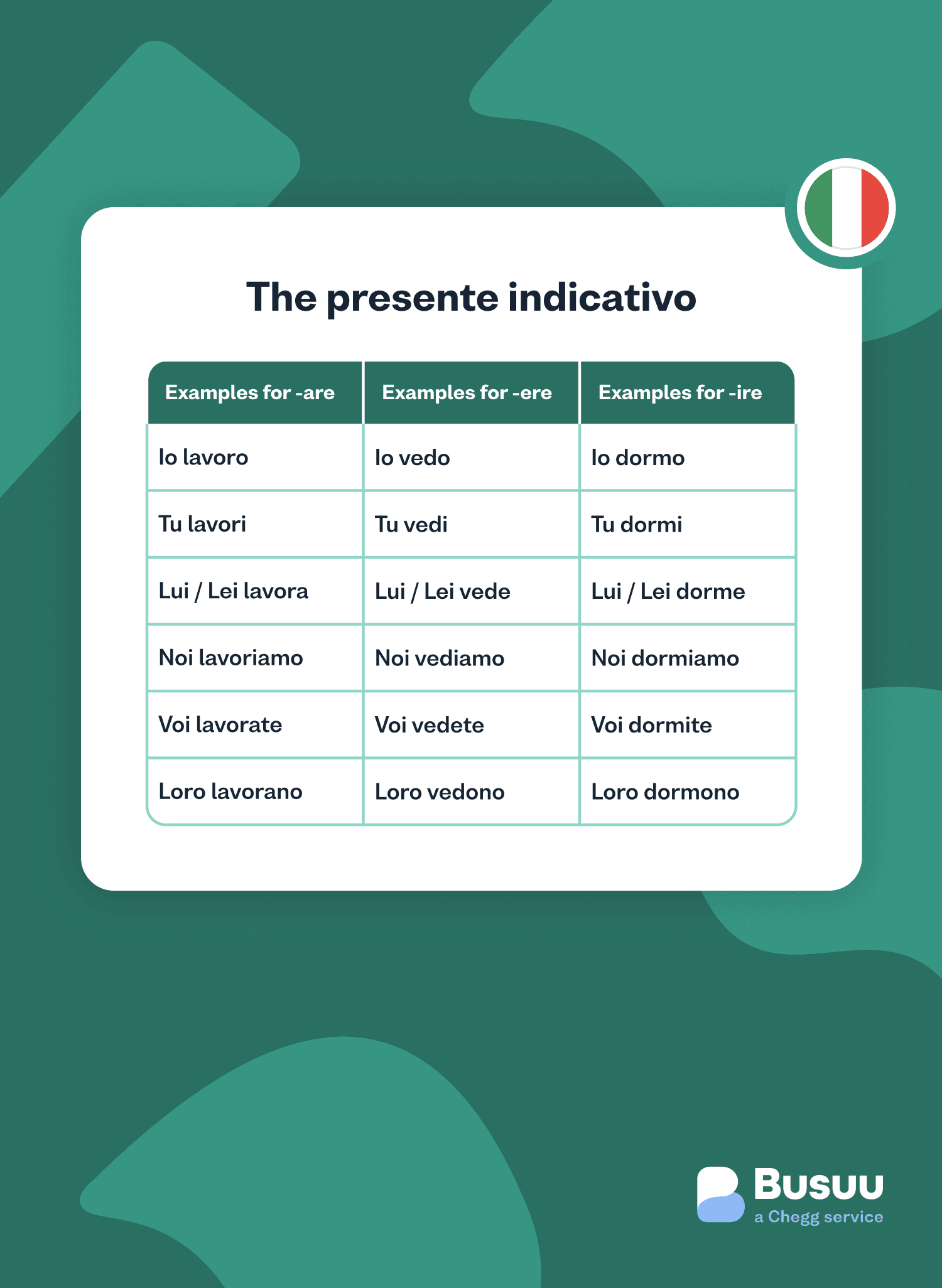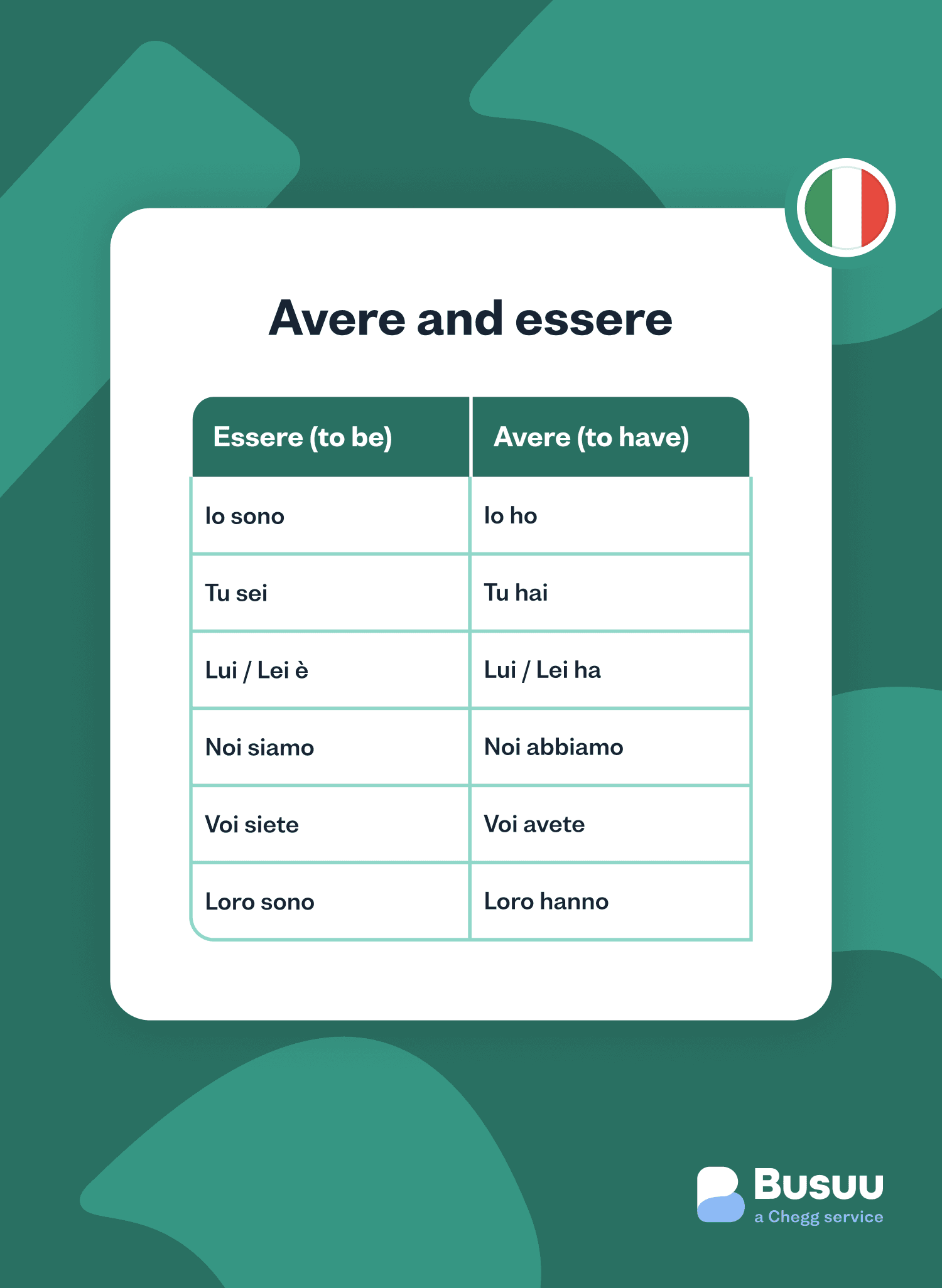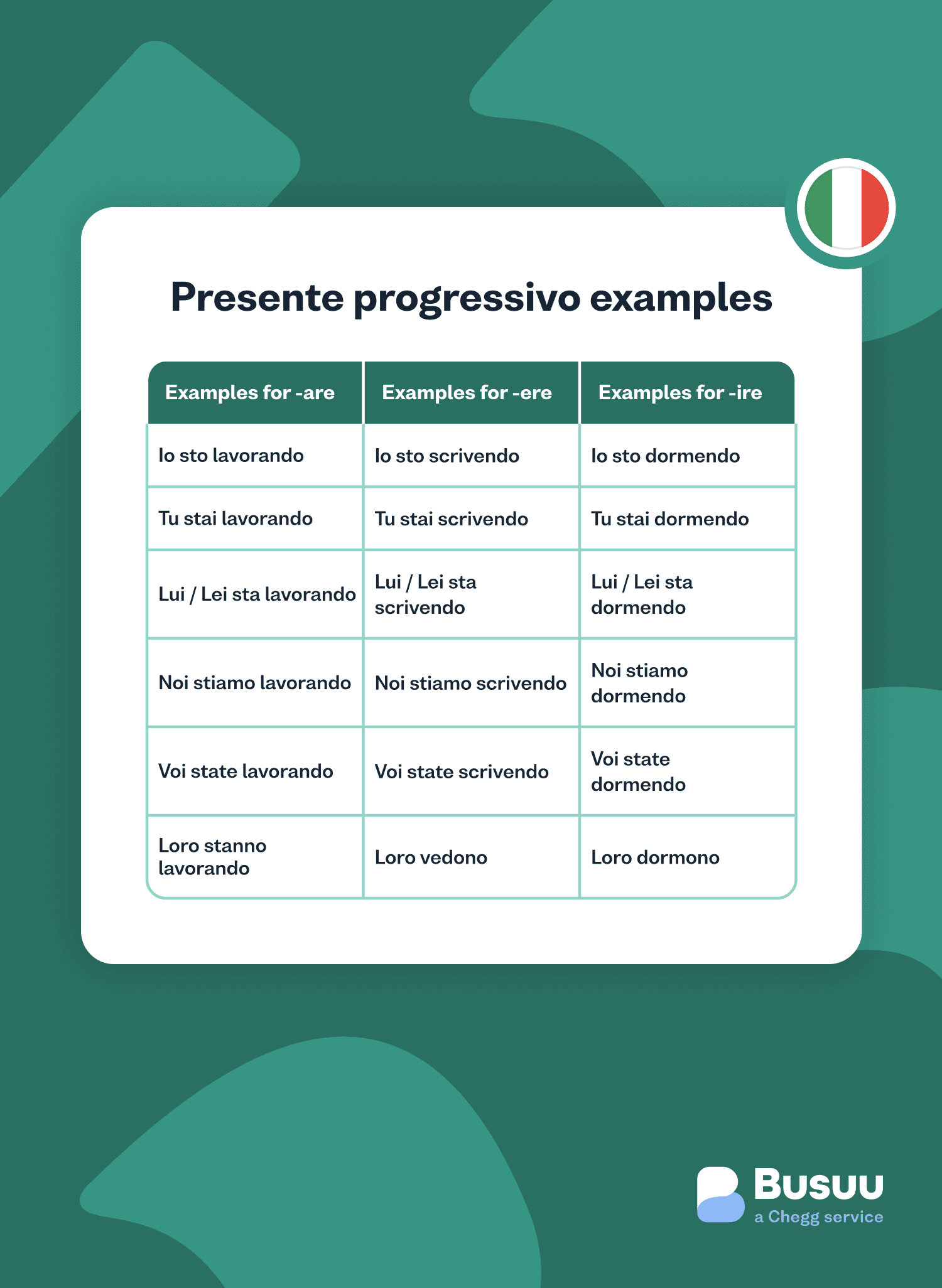I want to learn...
Considering Italian verbs compared to English can be a little disheartening. Think about it… Almost every tense has 6 forms, one for each subject (I, you, he or she, we, plural you and they). Plus there are several verbal manners: indicativo … basically verbal manners are bigger labels with multiple tenses inside. Then there are indefinite manners (infinito, gerundio, participio) and these have just one form each, bless their heart.
Long story short, a single Italian verb likeprendere(to take) can have up to a staggering 93 forms. Given that you can convey the same meaning in English using just a handful of forms, you have earned the right to be a little annoyed.
Those numbers might seem a little overwhelming but are much more manageable once you have discovered how verbs and tenses are structured (for an overview, check out article on Italian for Beginners) Also, even if Italian verbs are clearly more complex than in English, you’ll find that few tenses are going to be really useful on a day to day basis.
In this article we will focus on how Italian verbs are structured and how to pick the right tense for communication. Make sure to read until the very last line because there will be a very useful tip for you at the end.
How do Italian verbs work
Every Italian verb (with very few exceptions) belongs to one of three groups calledconiugazioni. You will be able to determine the group by looking at the final part of the infinitive, which is the basic form you would find in a dictionary (ie. to be)
The three Italian conjugations
| 1^ coniugazione | 2^ coniugazione | 3^ coniugazione |
|---|---|---|
| -are | -ere | -ire |
| Lavorare (to work) | Vedere (to see) | Dormire (to sleep) |
As you can see, these only differ for one vowel. Keep that in mind because this information will come in handy later. Every group will then have its set of forms for each tense and that little vowel will soon get involved. Every set of forms will vary following six different possible subjects.
The subjects
| Italian pronouns | English pronouns |
|---|---|
| Io | I |
| Tu | You (singular) |
| Lui / Lei | He / She |
| Noi | We |
| Voi | You (plural) |
| Loro | They |
This looks pretty similar to English, doesn’t it? There are a few differences: Italian differentiates between singular and plural “you”, and it doesn’t have an “it”, a neutral subject pronoun referring to an object.
Apart from that it’s pretty much the same but if you need to have a recap on basic Italian words you can check the most important grammar rules in our article on Italian for beginners.
Let’s get things rolling with the first tense you’ll need to learn: The present.

The presente indicativo
| Examples for -are | Examples for -ere | Examples for -ire |
|---|---|---|
| Io lavoro | Io vedo | Io dormo |
| Tu lavori | Tu vedi | Tu dormi |
| Lui / Lei lavora | Lui / Lei vede | Lui / Lei dorme |
| Noi lavoriamo | Noi vediamo | Noi dormiamo |
| Voi lavorate | Voi vedete | Voi dormite |
| Loro lavorano | Loro vedono | Loro dormono |
Please note how the vowels we mentioned before (the ones that make the tree groups-are, -ere, -ire) become relevant again. Apart from the forms that are the same, these vowels make the difference between the three groups of verbs.
This is how most verbs work. Similar to the somewhat countercurrent and chaotic spirit of its inhabitants, even the language spoken in Italy is no stranger to having its exceptions and small or large moments of anarchy. There are, in fact, a number of irregular verbs, but for now we will only worry about two, the royal couple of all verbs and tenses.

Avere and essere
| Essere (to be) | Avere (to have) |
|---|---|
| Io sono | Io ho |
| Tu sei | Tu hai |
| Lui / Lei è | Lui / Lei ha |
| Noi siamo | Noi abbiamo |
| Voi siete | Voi avete |
| Loro sono | Loro hanno |
Even these highly irregular verbs have something that should sound familiar. You see how some endings are basically the same, likenoiandvoi? It’s true that the part of the word identifying the subject is always quite similar in different tenses and this will allow you to understand which subject they are referring to, even if you don’t know the specific tense people are using. For now, let’s keep on focusing on this present tense because it’s fundamental to communication of any kind.
But when do we use the present? We use it to talk about the present, obviously, but not only. The Italian present tense has this nice bonus: it is the most common tense used to talk about the future.
Let’s say you want to meet with a friend tomorrow. You would ask:
Ci vediamo domani? (Are we going to see each other tomorrow?)
No, mi dispiace. Domani lavoro tutto il giorno. (No, I’m sorry. Tomorrow I’ll be working all day.)
You see? You are already covered for the present and the future. Italian does have a tense calledfuturebut, ironically, it’s not used very often to talk about the future.
The presente progressivo
Let’s say you want to describe an action you are doing right now. “You’re listening to music”, “You’re sipping coffee”, “You’re finally understanding Italian tenses”… to name a few.
How would you say that in Italian?

Presente progressivo examples
| Examples for -are | Examples for -ere | Examples for -ire |
|---|---|---|
| Io sto lavorando | Io sto scrivendo | Io sto dormendo |
| Tu stai lavorando | Tu stai scrivendo | Tu stai dormendo |
| Lui / Lei sta lavorando | Lui / Lei sta scrivendo | Lui / Lei sta dormendo |
| Noi stiamo lavorando | Noi stiamo scrivendo | Noi stiamo dormendo |
| Voi state lavorando | Voi state scrivendo | Voi state dormendo |
| Loro stanno lavorando | Loro stanno scrivendo | Loro stanno dormendo |
As you can see we are using another verb, the verb“stare” (to stay) in the present tense, followed by a different form called gerundio to form a different tense and get the equivalent of: “I’m working”, “I’m writing”, “I’m sleeping”.
Now that you know how to speak about the present and the future, let’s see how the past works.
Italian past tense
When talking about the past, things get a little more complex because we need to use two different tenses working together: the passato prossimo and the imperfetto.
Thepassato prossimo
Passato prossimo is what we call a compound tense, a tense formed by two parts. Before we get into it, do you remember the present of irregular verbs avere and essere?
Well, look at this, then:
Passato prossimo examples
| Andare (to go) | Lavorare (to work) |
|---|---|
| Io sono andato / andata | Io ho lavorato |
| Tu sei andato / andata | Tu hai lavorato |
| Lui è andato / Lei è andata | Lui / Lei ha lavorato |
| Noi siamo andati / andate | Noi abbiamo lavorato |
| Voi siete andati / andate | Voi avete lavorato |
| Loro sono andati / andate | Loro hanno lavorato |
If this looks familiar, it’s because the first part of the verb is the present of the verbsessereoravere. They are followed by another verb called participio.
Here you have it:
Participio passato examples
| Lavorare (to work) | Vendere (to sell) | Dormire (to sleep) |
|---|---|---|
| Lavorato | Venduto | Dormito |
The rule is pretty simple… when it applies. The thing is that this particular tense can really often be irregular, especially in the2^ coniugazione. The verbs that we have already seen will bescrivere–scrittoandvedere–vistoand there are a lot more exceptions.
Let’s get back to the regular form, though.
We will use the present ofessere for some verbs, mostly verbs that indicate movement likeandare(to go) orvenire(to come) and we will use the verb avere for the majority of verbs.
When you have a verb that starts with essere you will have two forms:sono andato for a male subject and sono andata for a female subject. Same with the plural siamo andati (masculine) andsiamo andate (feminine).
It might look complicated but with a little practice, you will be talking about the past like you’re ready to start writing your memoirs.
The Imperfetto
Wait a minute… We said that there are two verbs that we use when talking about the past in Italian. Does this mean that there is another equally complex form to learn? Not really. Luckily imperfetto is much simpler.
Imperfetto examples
| Examples for -are | Examples for -ere | Examples for -ire |
|---|---|---|
| Io lavoravo | Io vedevo | Io dormivo |
| Tu lavoravi | Tu vedevi | Tu dormivi |
| Lui / Lei lavorava | Lui / Lei vedeva | Lui / Lei dormiva |
| Noi lavoravamo | Noi vedevamo | Noi dormivamo |
| Voi lavoravate | Voi vedevate | Voi dormivate |
| Loro lavoravano | Loro vedevano | Loro dormivano |
When passato prossimo and imperfetto is used
Imperfetto is the description of something, the repetitive action that you have done many times in the past.
Examples:
Did you use to have curly hair when you were little? Then: da piccolo avevo i capelli ricci.
Did you use to play the guitar? Suonavo la chitarra.
Both these types of action are rendered with the imperfetto.
On the other hand, if yesterday you went to the pizzeria to have a pizza then:Ieri sono andato /sono andata in pizzeria. Unless you decide to make that a habit, you are good to go.
Pro Tip: In language learning there is a lot to understand but sometimes there are things that you just need to commit to memory. The good news is that, just like with driving, cooking, exercising and most actions that don’t come as “natural”, they will soon become a habit after you have done it for a little while.
Wrapping up
Yes, Italian has a ton of tenses and verb forms, but you don’t need to worry too much about that!
There are really just three tenses you need to master so that a proper conversation in Italian can happen. Whether you want to describe what you did before (past), what you’re doing right now (present) or what your upcoming plans are (future), use this guide as your reference in using verb tenses in Italian with ease in your daily conversations.
AUTHOR

Laura Pennacchietti
Newlanguages


